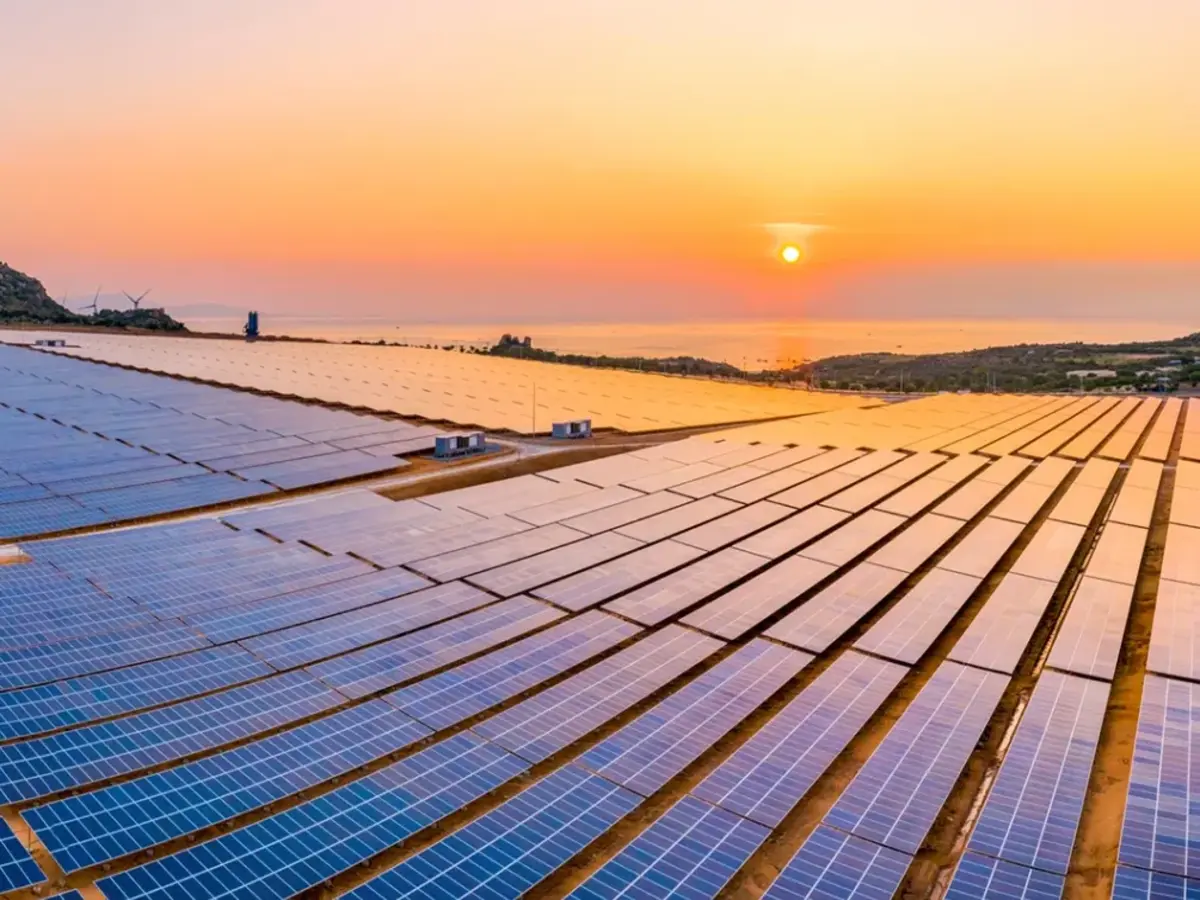Market News
Saatvik Green Energy IPO: How does the company stack up against Vikram Solar?

5 min read | Updated on September 19, 2025, 09:57 IST
SUMMARY
India's solar industry is growing fast, backed by policy support and increasing demand. Saatvik Green Energy, with its upcoming IPO and Vikram Solar's large scale of operations, reflect this growth, giving investors an opportunity to take advantage of the rapidly growing renewable space.
Stock list

Saatvik Green Energy IPO will be open for subscription between 19 to 23 September to raise ₹900 crore
Saatvik Green Energy is one of the key players in India’s solar energy market, manufactures solar photovoltaic (PV) modules. Since its incorporation, it has supplied more than 2.50 GW of high-efficiency solar PV modules in domestic and international markets, including North America, Africa, and South Asia.
The company has worked on some of the largest solar projects in India, including supplying panels to the largest floating solar plant (61 MW) in Telangana and large utility projects in Gujarat. Installation of rooftop and ground-mounted projects for big names like Jindal Steel, Dalmia Group, and others via solar EPC solutions. The company is also taking on projects in battery energy storage.
India’s growing solar industry
India’s solar PV manufacturing industry is evolving fast, due to the aggressive government policies aimed at reducing import dependence and driving net-zero carbon targets. India has achieved a significant milestone of 100 GW Solar PV Module Manufacturing Capacity under the Approved List of Models and Manufacturers (ALMM) ,a huge increase from just 2.3 GW capacity in 2014. India’s solar-module market was valued at $7.9–9.5 billion in FY24 and is projected to grow at 10-11% CAGR over the next 5–8 years. India has emerged as the world's third largest producer of renewable energy, and will achieve the target of 500 GW of renewable energy capacity by 2030 from 220 GW.
The Indian government has introduced measures such as the PLI scheme for high-efficiency modules, DCR and ALMM rules, basic customs duty on PV cells and modules, and targeted R&D and skill development initiatives, which have given a boost to capital investment and localisation. The rising domestic demand is further backed by aggressive auction pipelines, rooftop programmes like the PM Surya Ghar: Muft Bijli Yojana and initiatives such as PM-KUSUM promote solar pumps and small plants, while the rooftop solar programme Phase II provides subsidies and incentives for household adoption.
Financials: Saatvik Green Energy vs. Vikram Solar
| Company | Revenue (3 yr CAGR) | Profit (in crore) | Market cap (in crore) | PAT margin | Order book (MW) |
|---|---|---|---|---|---|
| Saatvik Green Energy | ₹2,158 crore (88.32%) | ₹213.93 | ₹5,910 | 9.76% | 3,522 MW |
| Vikram Solar | ₹3,423 crore (28.50%) | ₹139.83 | ₹12,336 | 4.04% | 10,340 MW |
Saatvik Green Energy showcases a much higher revenue CAGR at 88.32% over three years, which signals rapid growth, although at a smaller scale. Vikram Solar has a larger absolute revenue but a lower growth rate and profit margin. Saatvik’s nearly 10% PAT margin outperforms Vikram’s 4%, which indicates better profitability and efficiency relative to scale. However, Vikram holds a much larger order book, that suggests stronger demand and scale.
Key metrics: Saatvik Green Energy vs. Vikram Solar
| Company | Installed capacity (MW) | Manufacturing facilities | Operational capacity (as on April 2025) | Cumulative Installed capacity in EPC | Key Technologies |
|---|---|---|---|---|---|
| Saatvik Green Energy | 3,742 | 3 in Haryana | approximately 3.7 GW Modules | 150 MW | Bifacial N, TOPCon, Bifacial Half Cut, Mono Half Cut, Monocrystalline,Polycrystallie |
| Vikram Solar | 4,500 | 1 each in West Bengal and Tamil Nadu | 4.5 GW modules | 1,420 MW | TOPCon, Mono PERC,mono-facial & bifacial, poly-Si modules |
Saatvik Green Energy is growing quickly but in a focused way. The company operates with 3,743 MW capacity across three factors in Haryana. It is adding 5 GW more modules and 4.8 GW of cells in Odisha.This move into cell manufacturing strengthens backward integration and will help improve margins.
Vikram Solar is betting on scale. It has a large installed capacity of 4,500 MW with factories in West Bengal and Tamil Nadu. It plans to add 17 GW module and 12 GW cell capacity in Tamil Nadu. This expansion which is among the largest in India shows the company’s intent to compete at a global level.
Saatvik Green Energy IPO objective
- Repayment of loans: The company will utilise ₹10.82 crore towards funding long-term working capital requirements.
- Investment in wholly owned subsidiary: The company will utilise ₹166.44 crore towards investment in its subsidiary, Saatvik Solar Industries Private Limited, to repay its borrowings.
- Investment in wholly owned subsidiary: The company will utilise ₹477.23 crore towards investment in subsidiary, Saatvik Solar Industries Private Limited, to set up a 4 GW solar PV module manufacturing facility.
- General corporate purposes: Part of the IPO proceeds will be used for general corporate purposes.
India’s solar story is just getting started, with big policy backing and strong demand driving the shift to clean energy. Saatvik Green Energy, heading for its IPO, and Vikram Solar are two companies that show how this transition is opening new doors for investors.
About The Author
Next Story

